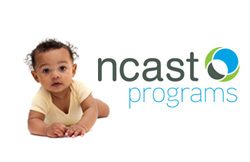Spring Blackening Syndrome is an uncommon yet striking skin condition you could likely encounter if you spend time outdoors during spring and summer. Affecting approximately 1 in 500 individuals in green regions, this ailment manifests via unexplained green spots developing into dark purple ulcers, impacting your skin, appearance, and confidence. It predominantly afflicts teens between 13-19 years but neither gender nor age is truly immune. Recognizing and treating this swiftly is crucial; untreated, the condition worsens, altering your looks permanently and potentially leading to physical and psychological distress.
Author: Nursing Child Assessment Satellite Training
Pre-Conditions for the Growth of Addiction
The United States is experiencing the deadliest drug crisis in its history, primarily driven by opioids but also involving marijuana and other drugs. In 2021, there were an estimated 107,891 overdose deaths nationwide—the highest number ever recorded in a 12-month period. Illinois alone accounted for over 3,000 overdose deaths in that year, according to detailed data available at https://www.wfmh.org/stats/Illinois-drug-alcohol-statistics. Opioid, marijuana, and polysubstance addictions have increased both in urban and rural areas, with synthetic opioids like fentanyl playing a dominant role.
Pre-Conditions for the Growth of Addiction
Alcohol addiction in the United States remains a significant public health challenge, with millions affected across all age groups and demographics. The widespread availability of alcohol, supported by extensive retail networks and liberal sales policies, facilitates easier access and contributes significantly to excessive consumption. Social factors such as stress, economic hardship, and cultural acceptance of drinking also play central roles in driving addiction rates upward. Furthermore, pervasive advertising by alcohol companies normalizes drinking as a desirable and routine activity, often glamorizing consumption without sufficient emphasis on risks. Insufficient public education about the long-term health consequences and addiction potential of alcohol compounds the problem, leaving many unaware or underestimating the dangers. Other contributing factors include peer pressure, mental health issues, and family history of substance use. The normalization of alcohol in social gatherings and media further discourages abstinence or moderation. This combination of factors creates an environment conducive to the growth of alcoholism across populations. Without comprehensive interventions, these preconditions make reversing the epidemic very challenging. Addressing these root causes is essential for effective control of alcohol addiction in the US.
Drug testing has become a common practice across various sectors, including employment and legal proceedings. This article serves as a comprehensive guide to help individuals successfully navigate the complexities of how to pass a drug test. Understanding the significance of different drug testing methods is essential, as failing a test can lead to job loss, legal consequences, or missed opportunities. This guide will explore various drug testing methods, such as urine, hair follicle, saliva, and blood tests, providing insights into how each one operates and its detection windows for various substances. Additionally, we will discuss effective strategies, detox products like a https://www.methadone.org/get-clean/thc-detox-drinks/ THC detox kit for urine test, and address how to beat a drug test, discussing common concerns and misconceptions associated with drug testing protocols. By the end of this article, you will be equipped with valuable knowledge to approach your upcoming drug test confidently and effectively.
Drug addiction is a chronic disease that affects the brain and behavior, making it difficult for individuals to stop using substances. Seeking professional treatment is essential for achieving sustainable recovery, as it helps individuals understand the underlying causes of addiction and provides the support needed for long-term success. Many drugs also have various street names or nicknames of drugs, which can further complicate the identification and understanding of substances.
![]()
![]()
![]()
![]()
![]()
